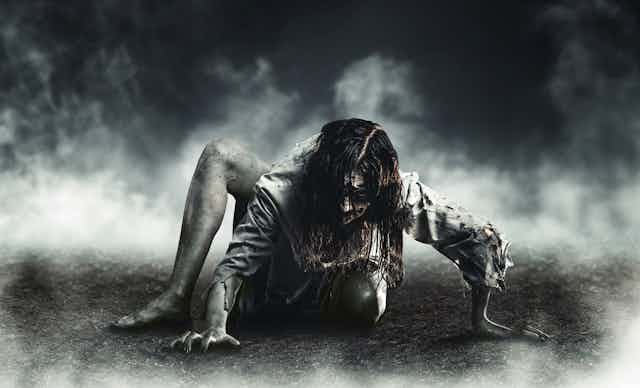Formative childhood experiences often explain our cultural tastes and tendencies as adults. My mature – or, some might say, immature – interest in the horror genre may very well be the result of the curiosity caused by the parental prohibition against watching a rented Betamax copy of The Exorcist when I was four or five years old and living in Iran, a prohibition that was ignored or withdrawn a few years later when I came to own copies of The Omen (dubbed) and Friday the 13th: Part 2 (in its original, incomprehensible English).
My late teenage years in Australia were marked by the miseries of poverty, culture shock, racism and loneliness – and the respite offered by watching Braindead, Candyman and Hellraiser with a few other lonely lower-class kids, my first Australian friends.
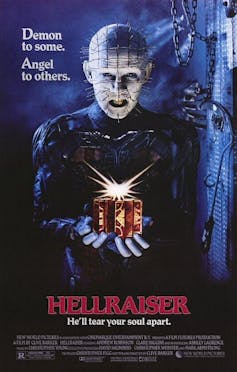
I hope starting this piece on a personal note does not appear self-indulgent. Upon deciding to become a writer in my 20s, I quickly realised that my interest in horror was to become private. If I were to have anything published here, I would have to write things expected of “different” folks blessed – or perhaps cursed – with an “identity”. Things such as a multicultural memoir.
The Australian cultural sphere was, and continues to be, one in which petite-bourgeois aesthetic moralism – which is to say, a preference for novels that promote an ideologically desirable or “positive” message about an issue of public interest – reigns supreme. It has little interest in blood-spewing zombies, debonair vampires, demonic spirits and chainsaw-wielding killers in leather masks.
Or at least that seems to be case. Notwithstanding a small allowance within the heavily monitored confines of the YA space, this country’s publishers and literary agents are likely to reject anything that smacks of the grotesque and the supernatural.
Crime fiction can and often does include macabre motifs, but these are entirely “safe” and subservient to the ethos and pathos of life-affirming crime-solvers. Our dystopias flirt with the horrific, but only to create the backdrops against which resilient protagonists survive and triumph over adversities.
What then are we to make of the strange fact that some of Australia’s best and most internationally successful films of recent times – Wolf Creek, The Babadook, Talk to Me – are indisputably horror? Or that Australian-born or Australian-based horror writers continue to work in a genre that will bring them neither fame nor fortune in the Great Southern Land?
Or that I am writing this piece on three new antipodean horror fictions when I could instead be praising the latest winner of a Premier’s Literary Award or enthusing about a vigorously hyped book-club sensation?
Bitters – Kaaron Warren (Cemetery Dance); Blackwater – Jacqueline Ross (Affirm Press); Bunny – S.E. Tolsen (Pan Macmillan)
Bitters
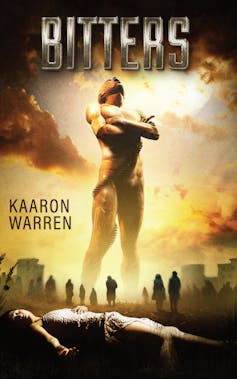
The three books under consideration are in no need of my writing; they speak for themselves. They also speak of the desires and fears of the contemporary world.
They are gripping in a way only a scary story can be. And the basic fact of their existence, not to mention their literary qualities and artistic merits, signals the potential for the growth of the horror genre in a literary scene that appears hostile or, at best, indifferent to it.
One Australian author who seems unfazed by the genre’s domestic troubles is the Canberra-based Kaaron Warren. She has been publishing fiction since the early 1990s and Bitters, her latest novella, is released through the US press Cemetery Dance, which seems to have become something of a home to many other Australian horror writers unsupported by local publishers.
Upon first encounter, Warren’s novella appears to be dystopian fiction. Its setting is an imaginary society where human corpses are interred in the gigantic metal statue of a man that transforms them into a drinkable commodity. The quality of this “disgusting” drink that smells “a bit like fermented fish paste”, the abundance of corpses, and the horrifically hidden ways in which humans are used as the ingredient for the pungent liquid, mark Bitters as a work of horror in addition to its dystopian and science-fiction dimensions.
Human consumption of the bodies of other humans is a time-honoured trope of speculative fiction. It is found in classics of the horror genre, such as Frankenstein and Dracula, as well as in some of the darker examples of science fiction, such as Harry Harrison’s novel Make Room! Make Room! (1966), which was adapted as the 1973 movie Soylent Green.
More recently, Argentinian author Agustina Bazterrica’s Cadáver exquisito (2017), translated into English as Tender is the Flesh, became a favourite with horror fans for its grisly depictions of abattoirs, in which herds of humans are systematically butchered and processed as meat for other humans.
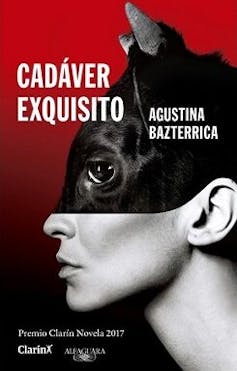
It is tempting to interpret such works as allegorical. Bazterrica’s novel could easily be seen as a harsh critique of Argentina’s beef industry. Warren’s Bitters might also be viewed as a dark satire on Australia’s drinking culture: the book’s title, in addition to referring to herbal alcoholic preparations, could allude to the pale or bitter beers that have a pride of place in many an Australian pub.
But interpretations like these could ensnare a complex literary work within the confines of a didactic commentary on a social topic. They also miss the work’s more original and intriguing features.
The stupendously huge metal man of Bitters is one such feature. It immediately brings to mind Talos, the giant automaton of Greek myth, although its origin is entirely secular. The metal man, so huge that “three men, arms stretched, can only just touch fingers around one shin”, has been towering over the landscape of the novella’s fictional universe for an unquantifiable period, “well beyond living memory, more than a thousand years”.
Despite this mysterious history, the inanimate monster was not planted on Earth by aliens or divine agents. It was built by humans, “section by section, the workmanship so perfect that if you ran your fingers over the joins you could only feel a slight ridge”.
What are we to make of this thing with the grim mechanism that devours the dead and processes them into the potion that is accessed via taps in its enormous toes? Who were the humans who built it? Why was it built? Questions like these, occasioned by lacunae within the story, propel the reader to become engrossed and unnerved. Is the metal man an environmentally sound engine for recycling the dead? It is a means for extracting exchange-value from our bodies in a hyper-capitalist universe? Is it good or is it evil?
Bitters tells the story of a “carrier”, a middle-aged man named McNubbin, whose job is to bring corpses up the spiral stairs of the metal man and dispose of them in the giant’s permanently gaping mouth.
Although McNubbin is generally happy with “the urgency of his job, the importance of it”, he starts to question the ethics of his role. He becomes aware of the growing number of “broken” young women whose bodies bear the marks of brutal violence. These seem to be the victims of the society’s dominant class, the “professors”, who supervise the work of the carriers, among whom we find the sinister Orton, a childhood friend of McNubbin’s.
Orton has this exchange with McNubbin when asked about the questionable corpses:
“There are more to come,” Orton said. “Your wife is already bitters, and so is your son. Your daughter. And the baby on the way. Already bitters.”
McNubbin said, “We will carry no more broken girls. We will not.”
“You will, or you will be bitters.”
“We are all bitters in the end,” McNubbin said.
I like the note of pessimism in this exchange, and in the narrative as a whole. It is a note that resonates with our fear of the calamities of the world – environmental disasters, pandemics, gendered violence – but one that does not express an irrational fear of death.
That we will all die and our bodies will be disposed of in some form or shape is a given. What makes this terse and enigmatic work of fiction effective is its focus on the question of human agency. In a world dominated by systems or modes of production that predate and outlive us, systems operated by shady elites who expropriate our labour-power when we live and commodify our corpses after we die, what remains of our humanity, of our basic subjectivity, when we have no say in how we live and die?
Read more: The book that haunts me – seven experts on the scariest thing they’ve ever read
Blackwater
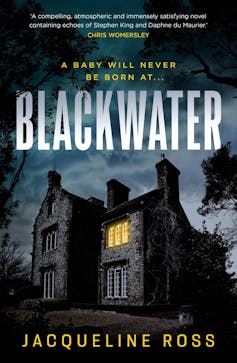
Another new Australian work of fiction, this one a debut novel, also conveys the fear of living in a setting with macabre, pre-existing coordinates.
Grace, the pregnant Melbournian protagonist of Jacqueline Ross’s Blackwater, slowly but surely comes to suspect that her doting husband’s inherited property in Tasmania may have a frightening history and that staying in the copiously gothic, exceedingly haunted dwelling could be very bad for her unborn child. Not unlike Warren’s corpse carrier, Grace struggles with a tenebrous order of existence that precedes her, although hers is the spectral world of a specifically Australian imaginary, bedevilled by the ghosts of colonial cruelty and injustice.
Blackwater is published by Melbourne’s Affirm Press, which I find interesting. Not only does it buck the trend of Australian publishers’ disdain for horror, but its publisher claims on its website to aspire to have “a positive impact on readers, cultures and the world”, a claim buttressed by such titles as Magic Kiss and How to Tackle Your Dreams.
Can a horror novel – one with a wonderfully “pulp” book design and the unabashedly ominous, horror-tinged tagline “a baby will never be born at … Blackwater” – suit this publisher’s rather earnest, upbeat agenda?
I won’t attempt to read the mind of the publisher, and I will leave it up to the readers of this very accomplished novel to decide whether Blackwater has its desired effect. Suffice to say, Ross’s novel does not have the kind of horrifying ending that characterises some of the classics of the haunted house genre, such as Shirley Jackson’s The Haunting of Hill House (1959) and Robert Marasco’s Burnt Offerings (1973).
Indeed, the novel could be interpreted as an ultimately motivational story of a would-be mother’s encounter with the revenants of injustices faced by past women. Grace not only comes to accept but cherish and celebrate her impending maternity and her baby’s “beautiful wail”.
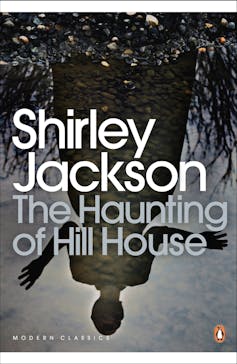
But there is a good deal in this novel to amuse horror fans who may not be in the market for life-affirming messages about parenting. The aged, inherited edifice at the centre of the book, Hammond House, is terrifically ghoulish and described in strong, affective prose. Upon first entering the house, Grace tries to convince herself it may not be “as gloomy as it seemed”, but she starts to discover that it may in fact be much worse.
The house does malign, malicious things to its new owners. A mirror breaks out of its frame and hurls itself at Grace, one of its shards almost slashing a vein on her wrist. In the toilet, she innocently pulls an antique flush chain, only to be greeted by a flood of “chunky, thick brown water, wads of sodden toilet paper, a smell like [she’s] been plunged headfirst into a drain”. Not surprisingly, she immediately tells her husband: “Get me the fuck out of this house.”
Marxists will find much pleasure in a narrative that chronicles the misfortunes of ambitious middle-class characters who aspire to join the land-owning elites, putting their faith in the utterly faithless system of capitalism. Early in Ross’s novel, we discover that Grace is a small-business owner on the mainland. Her husband’s enticing inheritance augers social elevation. Tasmania is seen as a land of opportunity where investment in tourism could result in excellent profits for shrewd profiteers.
But could it, really? Blackwater evokes famous 1970s antecedents – Jay Anson’s The Amityville Horror (1977) and Anne Rivers Siddons’ The House Next Door (1978), among others – in which the commercial potential of seemingly desirable, seemingly upper-class “legacy” properties gives way to a horrific actuality, symbolised in demonic possession, territorial terrors and unbearable suffering.
I’m not sure if a critique of the fetishism and ideology of our current real estate market is one of the “positive impacts” that Blackwater’s publisher had in mind. But it is a pleasant surprise to see a well-written horror novel published by an Australian press.
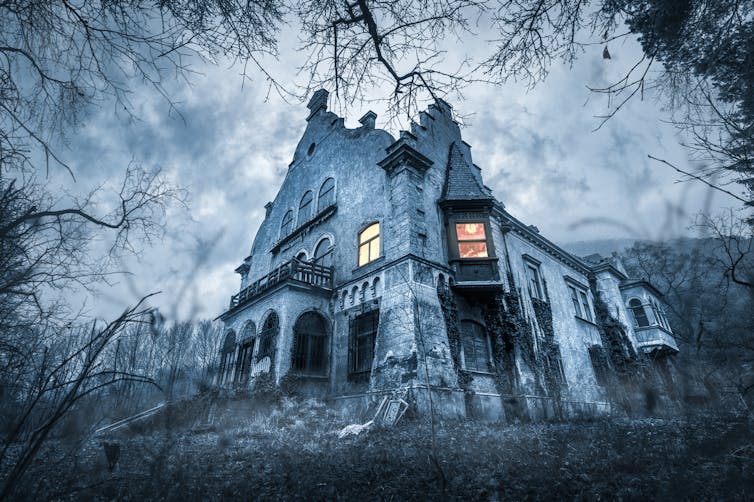
Read more: Friday essay: scary tales for scary times
Bunny
It is even more perplexing, and gratifying, to find the Australian arm of the international publishing giant Pan Macmillan publishing the final book I would like to discuss. Bunny is a novel that, according to its back-cover writeup, is for “fans of Stephen King and Stranger Things”. Can it be that horror is finally being acknowledged as the popular, culturally significant genre that it is, here, in Australia?
I was not surprised to discover that the author of the utterly captivating and thrilling Bunny, S.E. Tolsen, is represented by a South African rather than an Australian agent. Tolsen has South African connections: it is the pen-name of a Brisbane-based husband and wife writing duo, made up of the Johannesburg-born Vere Tindale and the New Zealand-born Emma Olsen.
Their novel is not to be confused with another recent book, Mona Awad’s horror-adjacent novel with an identical title. Somewhat like the latter, Tolsen’s Bunny is occasionally concerned with the travails of being a writer, but it is focused on things far more terrifying than that.
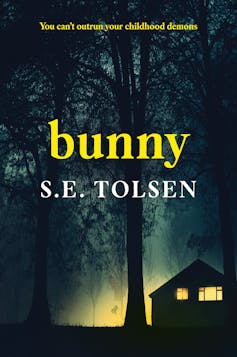
Bunny’s tense opening ends with a jump-scary cliffhanger. A child called Silas is frightened by his increasingly drunk and threateningly weird babysitter – his youngish aunt, the eponymous Bunny. Silas hides under the dresser in his bedroom, but Bunny follows him. Her eyes “bore into him from across the room”. They are “not her eyes; they’re the same colour and shape, but they’re not her eyes”. Then, in the last sentence of this terrific prologue, “her hands clamp around his arms as she pulls him from under the dresser”.
Is Bunny demonically possessed, an alcoholic child-abuser, or maybe a combination of both? Could it be that Bunny is trying to protect her nephew from an evil greater than her own frightfulness?
In the next section, we find ourselves 24 years into the future, with an adult Silas and his partner Rose working on a film script they hope to sell to a Hollywood studio. The novel operates through shifts between the origins of Bunny’s malevolence and Silas’s current predicaments, as he and Rose – and their haplessly loyal dog, Goober – find it necessary to move temporarily into Silas’s mother’s house in rural New England.
Much to their horror, they discover they must share the house with aunt Bunny, who has become even more fearsome with age.
The authors’ decision to set Bunny in the United States may have been occasioned by the desire to appeal to an American readership. It may also be an homage to the work of H.P. Lovecraft, the hugely influential US writer whose New England-based tales of encounters with unfathomably inhuman monstrosities are an obvious influence on Bunny.
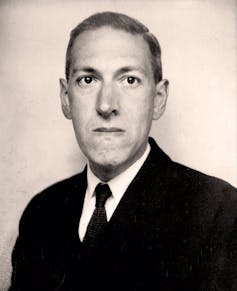
The novel does include one delightful connection to Australia, via a veterinary doctor called Eugene Demopolous, a “transplant from Australia” who is described, in a fleeting reference to “Antipodean vernacular”, as “a brick shithouse of a man”.
But can even this tough and capable Aussie be a match for the profound horror at the heart of Bunny’s deranged soul, a horror with eerie roots in the physical landscape, an evil that may engulf Silas and Rose’s dream of becoming successful writers and much worse?
I don’t want to give away any more of the plot than would be necessary to encourage readers to read this wonderful novel. The ending is entirely unpredictable and breathtakingly shocking, and it alone places Bunny among the best Anglophone horror novels of this century, alongside works by authors such as Paul Tremblay, Catriona Ward, Ronald Malfi, Stephen Graham Jones and Ania Ahlborn.
But Bunny should also be read for its exquisitely monstrous moments and images. In one scene, a terrified adult Silas watches the disturbance on the surface of a nearby lake and sees “in the midst of the ripples, dark shapes rise to the surface”. These are black eels, and “swimming among them in the icy water” is Bunny’s “bare, skeletal figure that looks like the white unearthed roots of the pines on the shore behind her”.
In another scene, Rose is finishing her shower in the house when:
Bunny crawls on hands and feet into the bathroom. Her limbs bend at acute angles as her writhing jaw juts forward […] Bunny crawls closer. Rose can just make out her form in the near-darkness. Bunny’s jaw snaps as if dislocating. Rose’s eyes trace the prominent bumps on Bunny’s back – vertebrae, which look disturbingly close to slicing her anorexic back.
Scenes such as this would translate very well to the screen, and, not unlike the writing couple in their novel, Olsen and Tindale – whose surnames combined produce their nom de plume Tolsen – have cinematic aspirations. Bunny is apparently based on an earlier screenplay written by the couple, and I very much hope to see it made into a movie. I also hope Bunny will find the many readers it deserves.
Whether these readers will be in Australia, where most bookshops no longer have a horror section and the literati seem to have, well, a horror of the genre, remains to be seen. Let us note, finally, that our publishing industry’s disdain for horror is rather peculiar. One would have to be living in a cave – a cave without wifi and streaming services – to have missed that both big and small screens are currently overrun with horror films and series.
It would also not be so hard to see that horror publishing is enjoying something of a “golden age” – as seen in commentaries such as this or this or this or this.
I hope that novels, such as Bunny, Bitters and Blackwater – with their uncannily alliterative titles – and the tenacity of organisations such as the Australasian Horror Writers Association illustrate that Australian horror, despite its neglect, is alive and kicking – and crawling on the floor, frightfully howling at the moon, swimming with creepy serpents in a lake, and so on.

